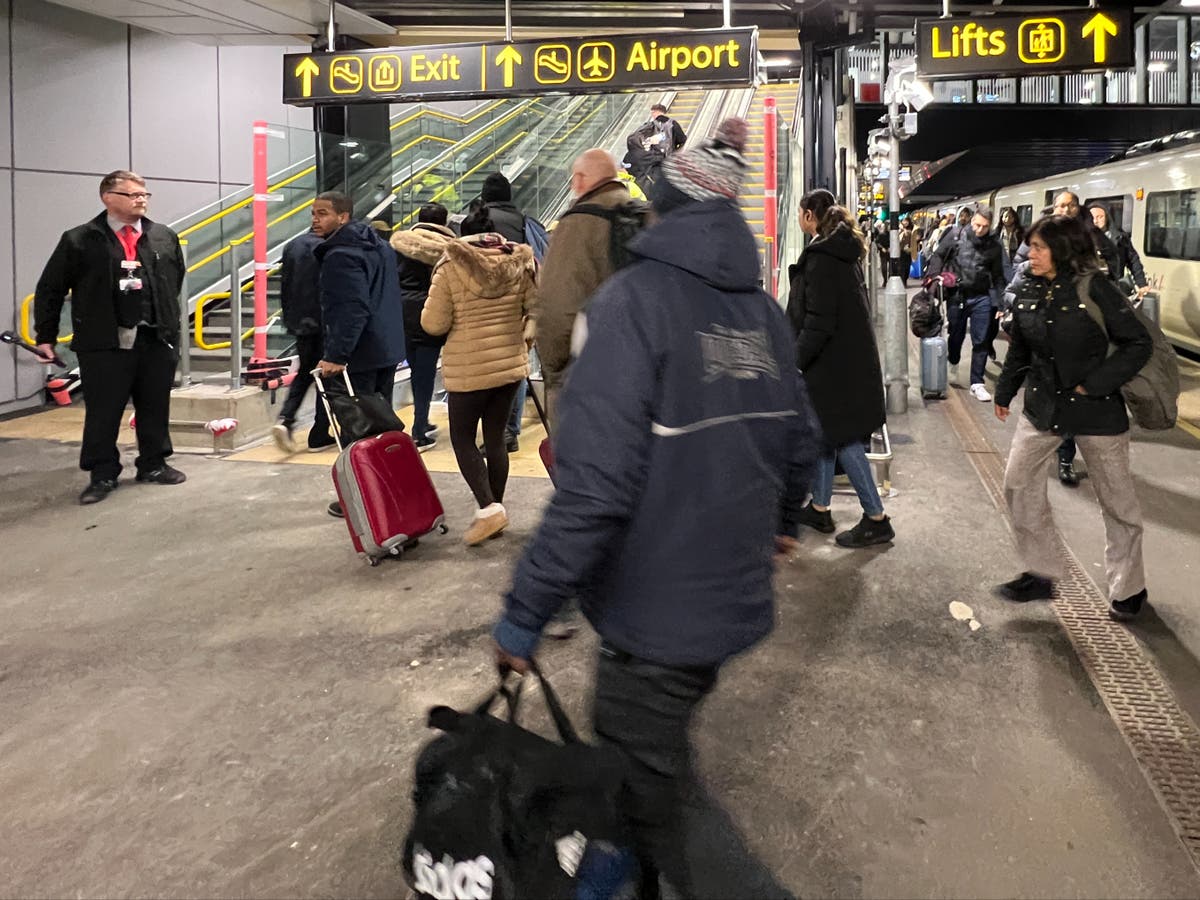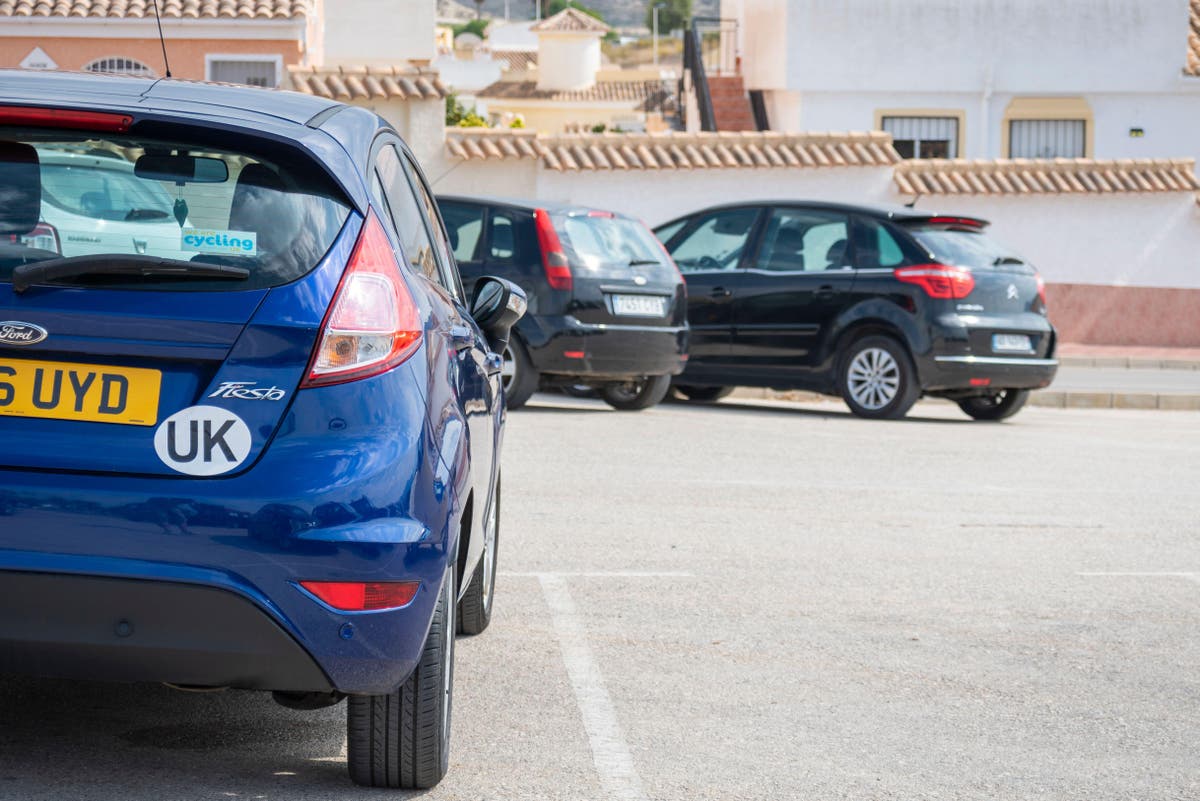Five things you’ll find at Gatwick airport’s new £250m train station
The transformed interchange at South Terminal has no traditional rail ticket office, and the Cornish pasty outlet has closed too

Sign up to Simon Calder’s free travel email for expert advice and money-saving discounts
Get Simon Calder’s Travel email
In the 1930s, the UK led the world in connected transport: Gatwick was the first airport anywhere on the planet with a direct connection between trains and planes. Integrated transport has been at the heart of the hub’s identity ever since, but the 1960s railway station has been bursting at the seams and a pain to use for many years.
Since 5.46am on Tuesday 21 November 2023, passengers suddenly have more room to breathe. A rejuvenated £250m rail station, doubled in size, is now open as part of the airport’s South Terminal. Here’s what it means for passengers.
What was the problem that needed solving?
Gatwick was built at its current location because of easy access to the main London to Brighton rail line. When the Gatwick Racecourse was repurposed as an airport in the 1930s, a tunnel was built to the terminal. It proved revolutionary: passengers could travel from central London to central Paris in under three hours.
Today London Gatwick is the second-busiest airport in Britain. It has 15 trains an hour to London with some services continuing to Cambridge, Peterborough and Bedford, plus links to Brighton, the rest of the South Coast and Southampton – as well as trains to Reading for connections to the West of England.
But Britain’s airports are booming again. Arriving and departing airline passengers are rapidly approaching – and in many cases exceeding – pre-pandemic numbers. As anyone who has been to a British airport in the past six months or so will testify, congestion is growing.
With Gatwick returning to the almost 60,000 passengers per day who were using the airport rail station before Covid, the highly constrained space needed a radical solution. Congestion and resulting slow boarding delayed trains and caused disruption to ripple widely across the Southern and Thameslink networks.
According to the principal architect, Jordan Gill: “We had issues with safety, congestion and the passenger experience at Gatwick.”
What is the solution?
Doubling the available floor space – and separating arriving and departing travellers rather than having everyone milling about together. There are eight new escalators and five jumbo-sized lifts built for passengers with limited mobility or with large amounts of luggage and families with young children.
A pair of platforms are wider. The hope is that passengers will be able to get on and off trains much more quickly, which will also improve punctuality for passengers waiting up and down the line.
The new arrivals space is designed to work intuitively, using the airport’s style for signage rather than the traditional rail approach.
Who paid for the £250m upgrade?
The taxpayer covered most of the cost (£200m). London Gatwick Airport chipped in with £42m, with the rest made up by an enterprise called Coast to Capital.
In comparison, Inverness airport station, which was built from scratch and opened earlier this year, cost just £15m – though wider rail works including a passing loop and additional track added a further £27m. It was, though, a much smaller project.
The Gatwick transformation had to take place above a live railway and within an airport that runs 24 hours a day, with many other constraints – including the height of cranes that could be used, because of airspace restrictions.
What is the aspiration?
The new station forms part of Gatwick’s ambition to get three out of five passengers to the airport by public or ultra-low emission transport by 2030. Currently, the figure arriving by rail is 40 per cent, which has nearly doubled in the past two decades.
Easier rail access is part of the carrot; the recently introduced £5 drop-off charge for people who want to be dropped at the terminal is a stick.
But aren’t passenger numbers down, post Covid?
Yes. Across the network, there are around 20 per cent fewer rail travellers. But Gatwick’s decline is probably less, because aviation has rebounded so strongly.
Stewart Wingate, the airport’s chief executive, says: “This year, we'll see about 41 million passengers travel through the airport So we're about 90 per cent recovered across the full year versus 2019. And we're very confident about the future prospects for the growth of the airport.
“What we'd like to do in the future is bring into routine use our northern runway. We're currently going through a planning process to make that happen and we should be examined in 2024, with a decision from the government about this time next year.
“We could grow to as many as 78 million passengers in the late 2030s.”
Do I still need to take the Shuttle from the rail station to North Terminal?
Yes, although it is also a reasonably pleasant 15-minute walk.
What about the coming rail strikes?
Passengers using Gatwick will be impacted twice: once on Sunday 3 December, when Thameslink train drivers will walk out, and Wednesday 6 December when it’s the turn of Aslef members working for Gatwick Express and Southern.
But for main line passengers between London, Gatwick and Brighton, there should still be a fair number of trains running. They may be very crowded, especially in the mornings. And if you’re trying to connect from other parts of England, it could be messy all the way through from 1 to 9 December.
Five things you’ll find at Gatwick’s new station
Two things you won’t find
Listen to Simon Calder’s podcast report from the new Gatwick station

 Lynk
Lynk 
































